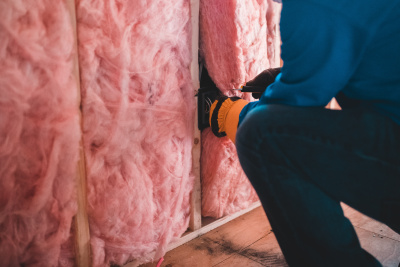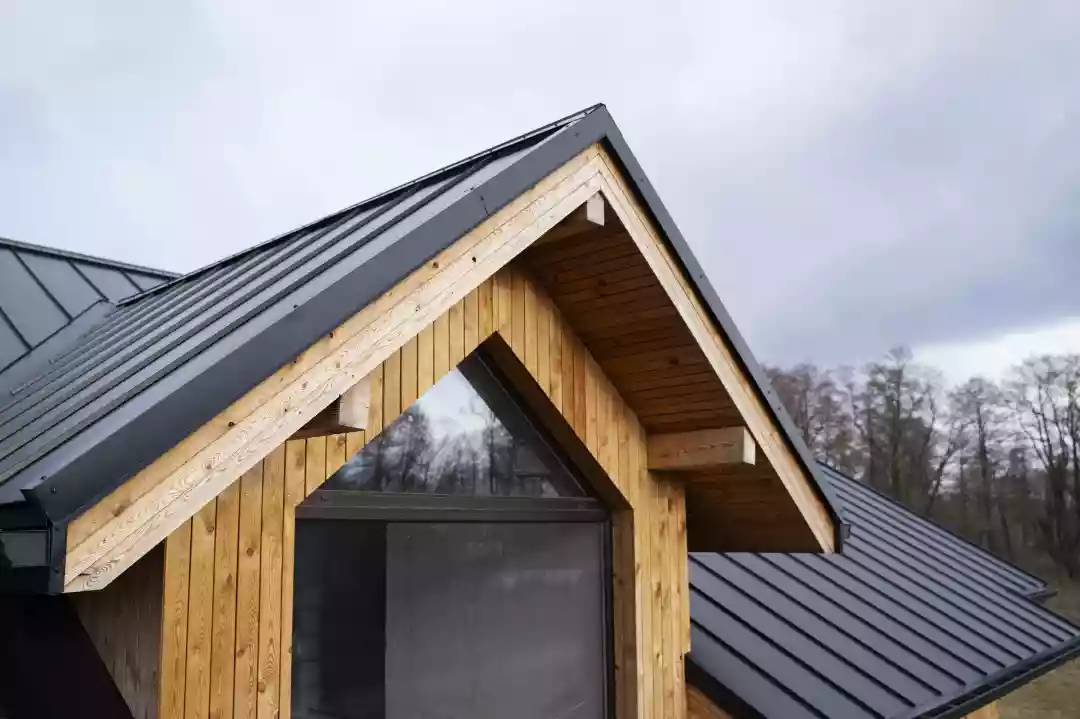What Are Radiant Barriers?
Radiant barriers are a type of insulation consisting of a reflective material that blocks the transfer of radiant heat emitted from a roof, wall, or floor. They are especially effective in hot climates and can reduce cooling costs by 10-15%. These barriers act like a shield by reflecting the radiant heat away from the house and helping maintain comfortable temperatures inside the home. They are an ideal choice for loft conversions as they can reduce energy demands and make the space more comfortable throughout the year.
How Do Radiant Barriers Work?
Combining conduction, convection, and radiation allows heat to move from a heated location to a cold one. Like how a spoon placed in a hot cup of coffee transmits heat through its handle to your palm, heat transfers through conduction occur when a hotter point inside a material or assembly passes through to a cooler area. Convectional heat transfer happens when a liquid or gas, like air, gets heated, loses density, and rises. The liquid or gas condenses and descends as it cools. Any solid object that takes in radiant heat is heated because it radiates heat in a straight path away from any surface.
The majority of conventional insulating materials function by decreasing the rate of convective and, to a lesser degree, conductive heat movement. Systems with reflecting insulation and radiant barriers lessen radiant heat gain. The reflecting surface must be facing an air space for it to be effective. The reflecting surface's capacity to reflect light will be diminished if dust builds up on it. Installation of the radiant barrier should prevent too much dust from gathering on the reflecting surface.
By placing itself perpendicular to the radiant energy affecting it, a radiant barrier minimises radiant heat transmission from the bottom of the roof to the other surfaces in the loft. The benefits of a radiant barrier increase with the temperature differential between its two sides.
In hot areas, radiant barriers are more effective than in cool climates, especially when cooling air ducts are positioned in the loft. According to some research, radiant barriers can cut cooling costs by 5% to 10% when employed in a warm, sunny region. Because of the lower heat gain, a smaller air conditioning system may be required. In cool climates, however, adding greater thermal insulation is typically more cost-effective than adding a radiant barrier.

Need assistance finding loft insulation near you?
Get a QuoteTypes Of Radiant Barriers
A highly reflective material, frequently aluminium foil, is applied to one or both sides of a variety of substrate materials, such as kraft paper, plastic films, cardboard, oriented strand board, and air infiltration barrier material, to create radiant barriers. Some objects employ fibre reinforcement to increase their durability and portability. Radiant barriers can be used with a number of insulating materials in reflective insulation systems. In some configurations, the thermal insulation's face material might be radiant barriers.
Radiant Barrier Benefits For Lofts
The majority of radiant barriers are installed on the inside loft structure of the home and act similarly to a shining automobile windscreen sunshade by reflecting heat flow out of your house. Usually, radiant heat transfer - a very effective kind of transmission similar to the heat waves of a microwave - is how heat is distributed throughout the house. Hot molecules heat the first surface they come into touch with during radiant heat transfer. The room then becomes increasingly hot as heat radiates from the surface, forcing you to quickly switch on the air conditioner.
Radiant barriers can assist in lowering indoor temperatures, which will decrease your demand for energy-intensive air conditioning. Radiant barriers are big energy savings because they stop heat from moving and retaining inside a house. A radiant barrier can significantly lower a homeowner's use of the cooling system in their house if it is installed and functioning properly. In essence, the effectiveness of a home's heating and cooling systems is significantly reduced if the heat transfer between the inside and exterior of the property is very high.
Radiant Barrier Installation
Since proper installation is crucial to a radiant barrier's effectiveness, it is preferable to choose a competent installer. If you want to do the installation yourself, make sure you are aware of the building and fire regulations in your area. You should also carefully study the manufacturer's instructions and safety precautions. Radiant barriers may be installed in older homes as well, especially if they have open lofts. However, they are easier to install in new homes. To keep dust from accumulating on the reflecting faces of rolled radiant barrier foil while constructing a new home, installers typically drape the foil between the roof rafters. This is normally done just before applying the roof sheathing, although it can also be done later by stapling the material to the underside of the rafters from inside the loft.
In order to ensure that there is at least 1.0 inch (2.5 cm) of air space between the foil-type barrier and the bottom of the roof during installation, it is imperative to allow the barrier to "droop" between the connecting points. Another choice for sheathing is foil-faced plywood or oriented strand board.
Contractors and residents should avoid touching exposed electrical wire because reflective foil conducts electricity, as you should be aware. Radiant barriers should not be placed directly on top of loft floor insulation since the foil will be susceptible to dust accumulation and might trap moisture in the fibre insulation.
In general, building a radiant barrier is a great approach to saving energy costs while keeping your house comfortable. These barriers can assist in keeping your home cool in the summer and warm in the winter by preventing heat transfer. You may take advantage of all the advantages of radiant barrier insulation with correct installation without compromising comfort or safety.
In this article:
